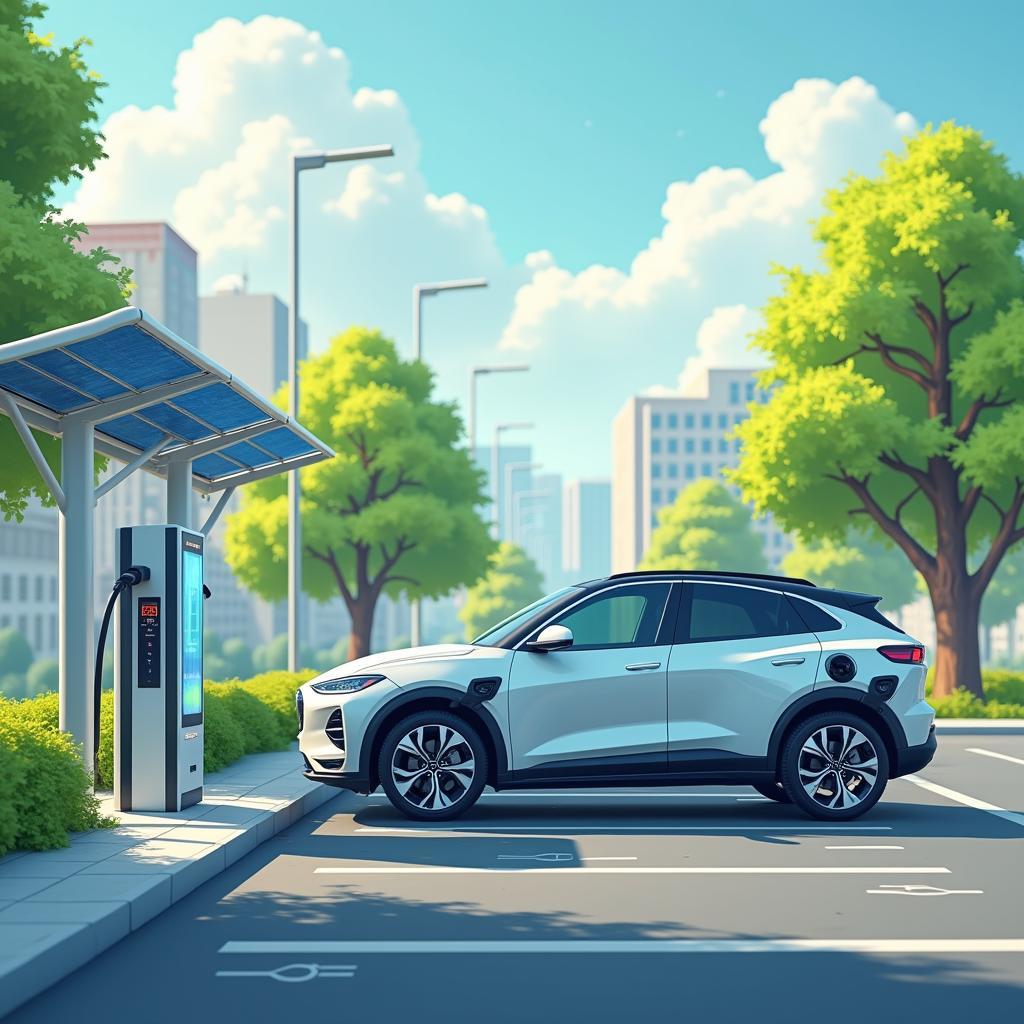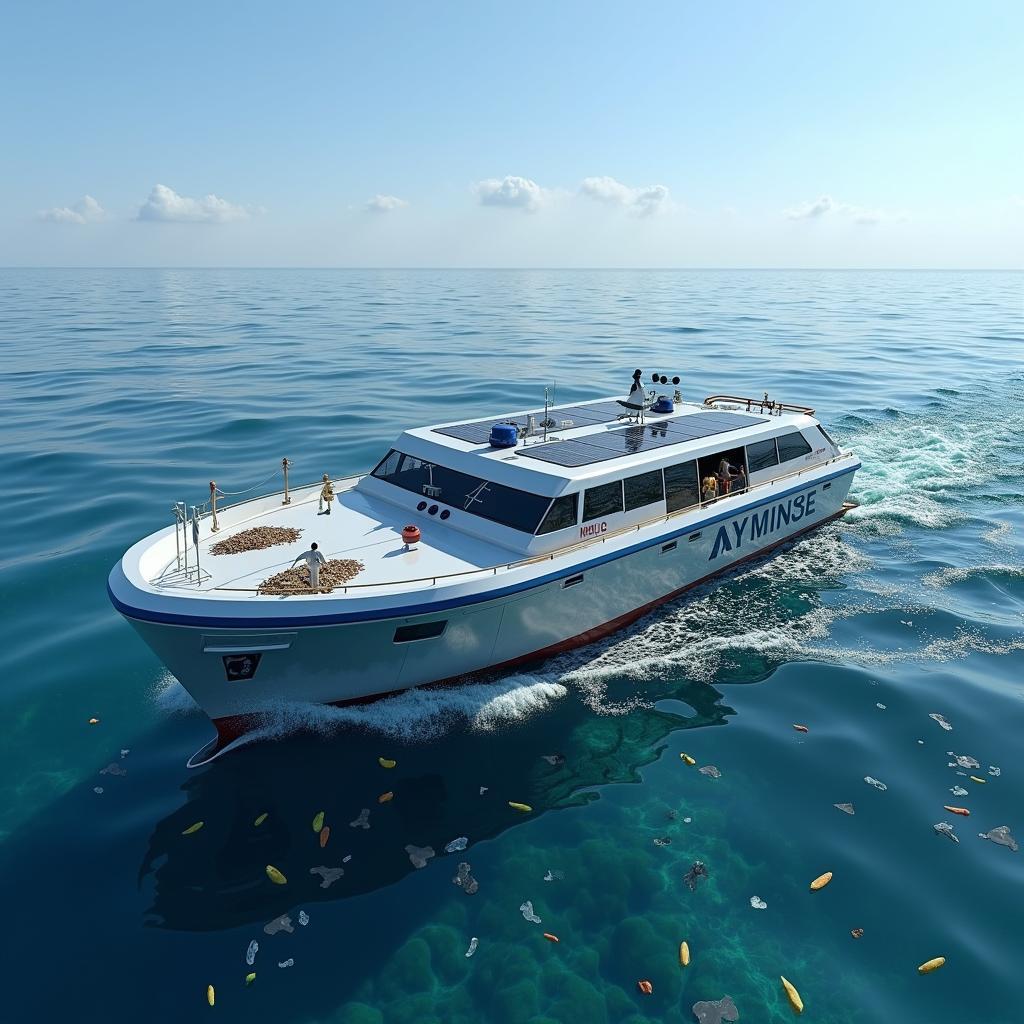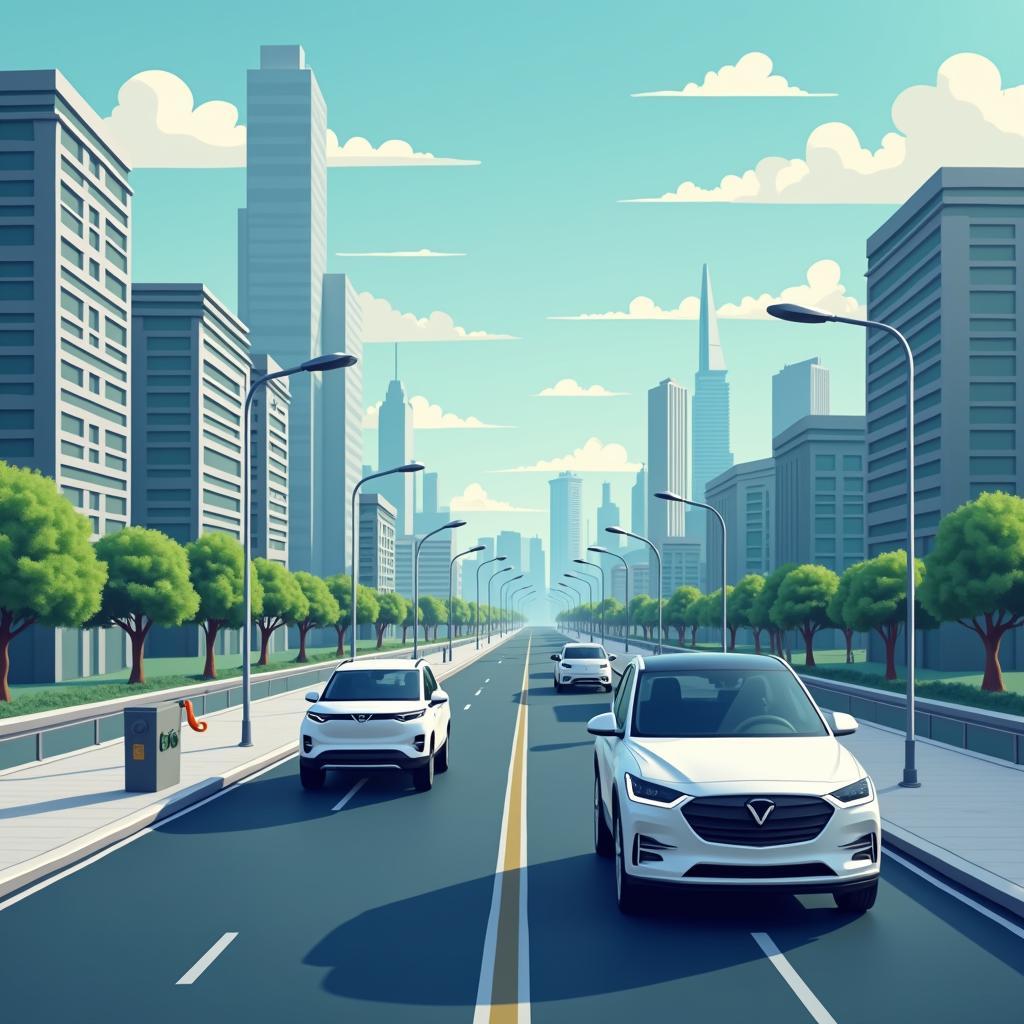Mở bài
Chủ đề về công nghệ và môi trường, đặc biệt là vai trò của công nghệ trong việc giảm thiểu ô nhiễm, đã trở thành một trong những topic phổ biến nhất trong IELTS Reading những năm gần đây. Với xu hướng toàn cầu hóa về vấn đề môi trường và sự phát triển vượt bậc của công nghệ xanh, chủ đề “The Role Of Technology In Reducing Pollution” xuất hiện thường xuyên trong các đề thi IELTS chính thức, đặc biệt từ Cambridge IELTS 12 trở đi.
Bài viết này cung cấp cho bạn một bộ đề thi IELTS Reading hoàn chỉnh với ba passages theo đúng chuẩn thi thật, bao gồm độ khó tăng dần từ Easy đến Hard. Bạn sẽ được trải nghiệm đầy đủ 40 câu hỏi với 7 dạng câu hỏi khác nhau thường gặp trong kỳ thi IELTS, kèm theo đáp án chi tiết và giải thích cụ thể cho từng câu. Ngoài ra, bài viết còn cung cấp bảng từ vựng quan trọng theo từng passage và những chiến lược làm bài hiệu quả.
Đề thi này phù hợp cho học viên có trình độ từ band 5.0 trở lên, giúp bạn làm quen với format thi thật và nâng cao kỹ năng đọc hiểu học thuật một cách bài bản nhất.
1. Hướng dẫn làm bài IELTS Reading
Tổng Quan Về IELTS Reading Test
IELTS Reading Test kéo dài 60 phút và bao gồm 3 passages với tổng cộng 40 câu hỏi. Mỗi câu trả lời đúng được tính 1 điểm, không bị trừ điểm khi trả lời sai. Độ khó của các passages tăng dần, với Passage 1 thường ở mức cơ bản, Passage 2 trung bình và Passage 3 khó nhất.
Phân bổ thời gian khuyến nghị:
- Passage 1: 15-17 phút (bao gồm cả thời gian đọc và trả lời câu hỏi)
- Passage 2: 18-20 phút (nội dung phức tạp hơn, cần thời gian suy luận)
- Passage 3: 23-25 phút (độ khó cao nhất, cần tập trung tối đa)
Lưu ý dành 2-3 phút cuối để kiểm tra và chuyển đáp án vào answer sheet.
Các Dạng Câu Hỏi Trong Đề Này
Đề thi mẫu này bao gồm 7 dạng câu hỏi phổ biến nhất trong IELTS Reading:
- Multiple Choice – Câu hỏi trắc nghiệm (chọn đáp án đúng từ A, B, C, D)
- True/False/Not Given – Xác định thông tin đúng, sai hay không được nhắc đến
- Matching Information – Nối thông tin với đoạn văn tương ứng
- Yes/No/Not Given – Xác định quan điểm của tác giả
- Matching Headings – Chọn tiêu đề phù hợp cho từng đoạn
- Summary Completion – Hoàn thành đoạn tóm tắt
- Short-answer Questions – Trả lời câu hỏi ngắn
2. IELTS Reading Practice Test
PASSAGE 1 – Green Technology Revolution in Urban Centers
Độ khó: Easy (Band 5.0-6.5)
Thời gian đề xuất: 15-17 phút
Cities around the world are facing an unprecedented crisis with air and water pollution reaching dangerous levels. However, a new wave of technological innovations is offering hope for urban populations. From smart waste management systems to electric public transportation, technology is becoming the primary tool in the fight against environmental degradation.
In Singapore, the government has implemented an integrated sensor network across the city that monitors air quality in real-time. These sensors, placed on street lamps and buildings, collect data on pollutant levels including nitrogen dioxide, sulfur dioxide, and particulate matter. The information is then processed using artificial intelligence algorithms that can predict pollution patterns and suggest preventive measures. When pollution levels rise above safe thresholds, the system automatically alerts authorities who can then implement traffic restrictions or adjust industrial operations.
Electric vehicles (EVs) represent another significant technological advancement in pollution reduction. Norway has become a world leader in EV adoption, with electric cars accounting for over 54% of all new car sales in 2020. The country achieved this through a combination of incentives including tax exemptions, free parking, and access to bus lanes. The shift from fossil fuel vehicles to electric ones has resulted in a measurable decrease in urban air pollution. Studies show that areas with high EV concentration have experienced a 30% reduction in harmful emissions compared to five years ago.
 Xe điện hiện đại đang sạc tại trạm sạc công cộng giúp giảm ô nhiễm không khí đô thị
Xe điện hiện đại đang sạc tại trạm sạc công cộng giúp giảm ô nhiễm không khí đô thị
Waste management technology has also undergone a remarkable transformation. In South Korea, the city of Seoul introduced smart recycling bins equipped with sensors and weight measurement systems. Residents use personal identification cards to dispose of waste, and the system automatically calculates recycling rates and provides feedback. This technology has increased the city’s recycling rate from 66% to 85% in just three years. The bins can also compact waste automatically, reducing the frequency of collection trucks on the roads, which in turn decreases traffic-related emissions.
Water purification technology has made significant strides as well. In California, several cities have adopted advanced water recycling systems that use multi-stage filtration processes including ultraviolet disinfection and reverse osmosis. These systems can transform wastewater into drinking water that meets or exceeds safety standards. The technology not only reduces water pollution by treating contaminated water but also decreases the demand for freshwater resources, which helps preserve natural ecosystems.
Industrial pollution has traditionally been one of the hardest challenges to address. However, new monitoring technologies are changing this landscape. Continuous emission monitoring systems (CEMS) use laser-based sensors to detect pollutants in industrial exhaust streams with high precision. Companies can no longer hide excessive emissions, as regulatory authorities have access to real-time data. In China, this technology has been mandatory for major industrial facilities since 2018, resulting in a 40% reduction in industrial air pollutants in monitored regions.
Renewable energy technologies are perhaps the most transformative in reducing pollution at its source. Solar panels and wind turbines have become increasingly efficient and affordable. In Denmark, wind power accounts for nearly 50% of electricity generation, significantly reducing the country’s carbon footprint. The technology has advanced to the point where offshore wind farms can operate efficiently even in challenging weather conditions, providing stable power supply without the pollution associated with coal or gas power plants.
Smart grid technology complements renewable energy by optimizing electricity distribution. These systems use digital communication to balance supply and demand, reducing energy waste and the need for backup fossil fuel generators. Cities like Barcelona have implemented smart grids that integrate renewable energy sources, electric vehicle charging stations, and residential consumption into a unified system. This has reduced overall energy consumption by 15% while increasing the proportion of clean energy in the mix.
Questions 1-13
Questions 1-5: Multiple Choice
Choose the correct letter, A, B, C or D.
-
What is the main purpose of Singapore’s sensor network?
A. To control traffic flow
B. To monitor and predict pollution levels
C. To improve street lighting
D. To track criminal activity -
Norway achieved high EV adoption rates through:
A. Mandatory vehicle replacement programs
B. Banning traditional vehicles
C. Offering various financial and practical incentives
D. Increasing fuel prices dramatically -
Seoul’s smart recycling bins increased recycling rates by:
A. Making recycling mandatory
B. Providing personal feedback and tracking
C. Offering financial rewards
D. Reducing bin availability -
California’s water recycling systems use all of the following EXCEPT:
A. Ultraviolet disinfection
B. Reverse osmosis
C. Chemical additives
D. Multi-stage filtration -
According to the passage, CEMS technology in China resulted in:
A. Factory closures
B. A 40% reduction in industrial pollutants
C. Increased production costs
D. International sanctions
Questions 6-9: True/False/Not Given
Do the following statements agree with the information in the passage?
Write:
- TRUE if the statement agrees with the information
- FALSE if the statement contradicts the information
- NOT GIVEN if there is no information on this
- Singapore’s pollution monitoring system can automatically implement traffic restrictions.
- Electric vehicles in Norway produce zero emissions during operation.
- Smart recycling bins in Seoul require residents to separate waste into different categories.
- Denmark generates more than half of its electricity from wind power.
Questions 10-13: Matching Information
Match the following benefits (A-F) with the correct technology (Questions 10-13).
A. Reduces frequency of waste collection vehicles
B. Provides real-time data to regulatory authorities
C. Optimizes electricity distribution
D. Transforms wastewater into drinking water
E. Predicts pollution patterns using AI
F. Operates efficiently in challenging weather
- Singapore’s sensor network
- Seoul’s smart recycling bins
- California’s water recycling systems
- Denmark’s offshore wind farms
PASSAGE 2 – The Technological Battle Against Marine Pollution
Độ khó: Medium (Band 6.0-7.5)
Thời gian đề xuất: 18-20 phút
The world’s oceans are facing an existential threat from pollution, with an estimated 8 million tons of plastic entering marine environments annually. This crisis has spurred remarkable innovation in cleanup technologies and preventive solutions. While the scale of the problem remains daunting, recent technological developments offer tangible hope for reversing decades of environmental damage.
Ocean cleanup systems represent one of the most ambitious technological undertakings in recent history. The Ocean Cleanup Project, founded by Dutch entrepreneur Boyan Slat, has developed a passive collection system that uses ocean currents to concentrate plastic debris. The system consists of a 600-meter-long floater that sits at the surface with a tapered screen extending three meters below. As the system drifts with the current, it moves faster than the plastic, which gradually accumulates in the center. Critics initially questioned the feasibility of such systems, arguing that they might cause unintended ecological damage by catching marine life. However, subsequent iterations incorporated escape routes for sea creatures and have demonstrated minimal by-catch in operational tests.
Autonomous collection vessels are emerging as another promising technology. These unmanned boats, powered by solar panels and wind energy, patrol coastal waters collecting surface debris. Equipped with machine learning algorithms, they can distinguish between different types of waste and prioritize collection based on environmental impact. The vessels, developed by a collaboration between marine engineers and artificial intelligence specialists, can operate continuously for months without human intervention, transmitting data on pollution patterns to research centers. Initial deployments in the Mediterranean Sea have collected over 50 tons of plastic in pilot programs, demonstrating the scalability of the technology.
 Robot thu gom rác biển tự động hoạt động bằng năng lượng mặt trời trên đại dương
Robot thu gom rác biển tự động hoạt động bằng năng lượng mặt trời trên đại dương
The prevention of pollution at its source requires equally sophisticated technology. Advanced filtration systems installed at wastewater treatment plants can now capture microplastics – particles smaller than 5 millimeters that pass through conventional filters. These systems use a combination of membrane filtration, magnetic separation, and biological processes to remove up to 99.9% of microplastic particles. A plant in Switzerland has pioneered this technology, processing water from a population of 150,000 people. The captured microplastics are then safely incinerated or converted into construction materials, preventing them from entering waterways.
Chemical pollution from industrial and agricultural sources presents a different challenge. Bioremediation technology uses specially selected microorganisms to break down harmful chemicals in water. Scientists have identified bacteria capable of metabolizing petroleum products, heavy metals, and persistent organic pollutants. These microorganisms are introduced into contaminated areas where they multiply and consume the pollutants, converting them into harmless byproducts. In the Gulf of Mexico, bioremediation played a crucial role in cleaning up after the 2010 Deepwater Horizon oil spill, with genetically enhanced bacteria accelerating the natural degradation process by a factor of ten.
Satellite technology has revolutionized pollution monitoring on a global scale. Synthetic aperture radar and multispectral imaging can detect oil slicks, algal blooms, and other forms of marine pollution from space. The European Space Agency’s Sentinel satellites provide high-resolution images that allow authorities to track pollution sources and enforcement agencies to identify illegal dumping. When combined with predictive modeling, this data enables proactive intervention before pollution reaches sensitive ecosystems. The technology proved instrumental in responding to several shipping disasters, where rapid detection allowed cleanup operations to begin within hours rather than days.
Blockchain technology is being applied to create transparent supply chains that reduce pollution. By tracking products from manufacture to disposal, blockchain systems ensure accountability at every stage. Several multinational corporations have implemented blockchain to verify that their packaging materials are properly recycled or disposed of. The technology creates an immutable record that prevents companies from making false environmental claims – a practice known as greenwashing. Consumer confidence increases when they can verify the environmental credentials of products through smartphone applications linked to blockchain databases.
Innovative materials science is addressing pollution by creating biodegradable alternatives to conventional plastics. Researchers have developed plastics from seaweed extracts, mushroom mycelium, and bacterial cellulose that decompose naturally in marine environments within months rather than centuries. These materials maintain the functional properties of traditional plastics while eliminating long-term pollution risks. A British company has created water bottles from marine algae that can be safely consumed by sea creatures if they end up in the ocean. Commercial viability remains a challenge, as these alternatives currently cost 30-50% more than conventional plastics, but economies of scale are expected to reduce this price differential as production increases.
Questions 14-26
Questions 14-18: Yes/No/Not Given
Do the following statements agree with the views of the writer in the passage?
Write:
- YES if the statement agrees with the views of the writer
- NO if the statement contradicts the views of the writer
- NOT GIVEN if it is impossible to say what the writer thinks about this
- The Ocean Cleanup Project’s system has completely solved the ocean plastic problem.
- Autonomous collection vessels represent a practical approach to marine pollution.


